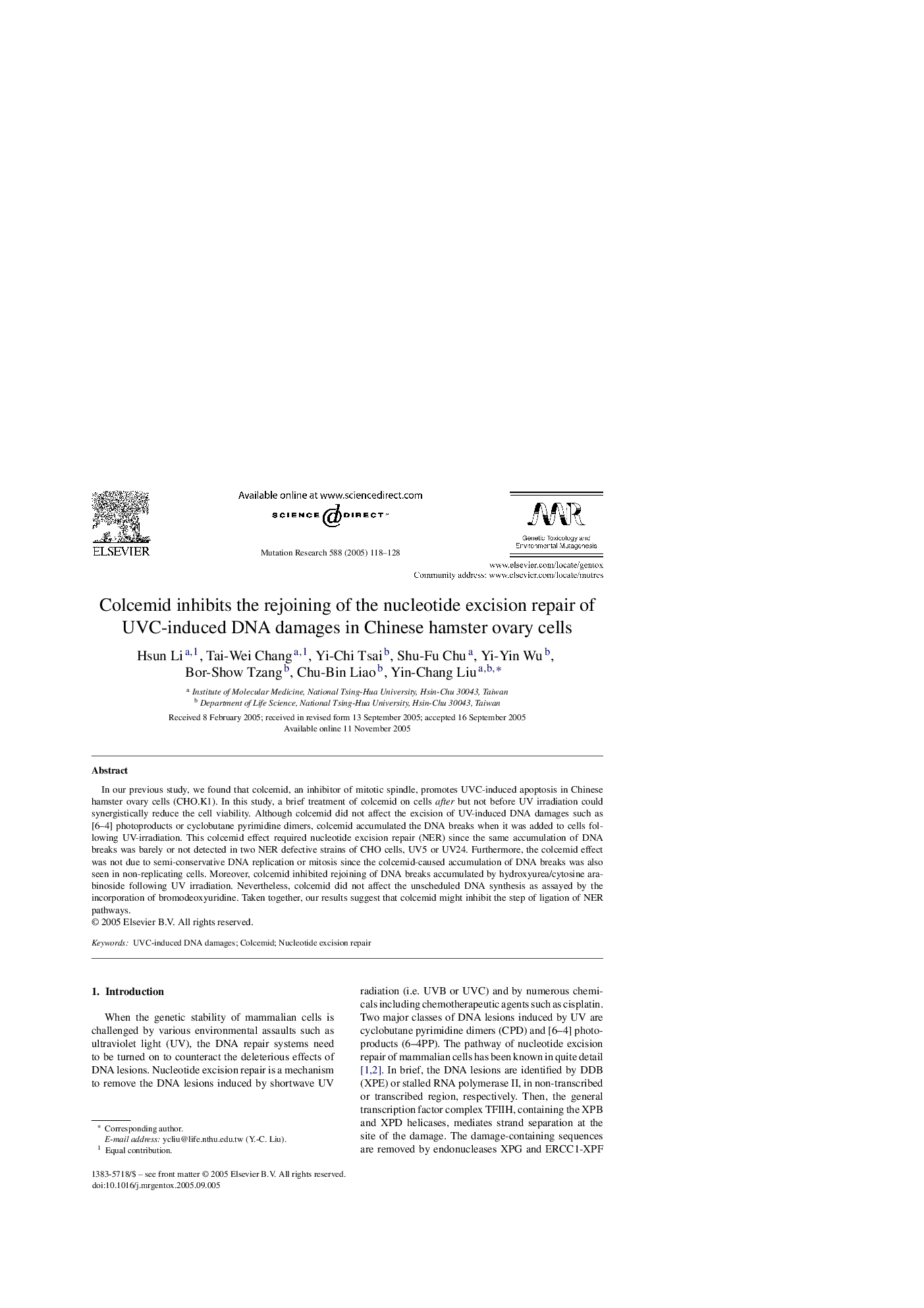| Article ID | Journal | Published Year | Pages | File Type |
|---|---|---|---|---|
| 9910067 | Mutation Research/Genetic Toxicology and Environmental Mutagenesis | 2005 | 11 Pages |
Abstract
In our previous study, we found that colcemid, an inhibitor of mitotic spindle, promotes UVC-induced apoptosis in Chinese hamster ovary cells (CHO.K1). In this study, a brief treatment of colcemid on cells after but not before UV irradiation could synergistically reduce the cell viability. Although colcemid did not affect the excision of UV-induced DNA damages such as [6-4] photoproducts or cyclobutane pyrimidine dimers, colcemid accumulated the DNA breaks when it was added to cells following UV-irradiation. This colcemid effect required nucleotide excision repair (NER) since the same accumulation of DNA breaks was barely or not detected in two NER defective strains of CHO cells, UV5 or UV24. Furthermore, the colcemid effect was not due to semi-conservative DNA replication or mitosis since the colcemid-caused accumulation of DNA breaks was also seen in non-replicating cells. Moreover, colcemid inhibited rejoining of DNA breaks accumulated by hydroxyurea/cytosine arabinoside following UV irradiation. Nevertheless, colcemid did not affect the unscheduled DNA synthesis as assayed by the incorporation of bromodeoxyuridine. Taken together, our results suggest that colcemid might inhibit the step of ligation of NER pathways.
Keywords
Related Topics
Life Sciences
Biochemistry, Genetics and Molecular Biology
Cancer Research
Authors
Hsun Li, Tai-Wei Chang, Yi-Chi Tsai, Shu-Fu Chu, Yi-Yin Wu, Bor-Show Tzang, Chu-Bin Liao, Yin-Chang Liu,
